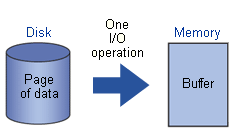IntroductionAs you have learned, there is no single set of programming techniques that is most efficient or appropriate in all situations. However, if reducing execution time is an important consideration in your computing environment, one way of achieving that goal is to reduce the number of times SAS has to read from or write to the storage medium. In this lesson you learn to use options and a statement to control the size and number of data buffers, which in turn can affect your programs' execution times by reducing the number of I/O operations that SAS must perform. |

| This lesson does not cover the Scalable Performance Data Engine (SPD Engine), which is a SAS 9.1 technology for threaded processing. For details about using the SPD Engine to improve performance, see the SAS documentation. |
|
|
45 minutes |
|
In this lesson, you learn to
|
|
complete the following lessons:
|